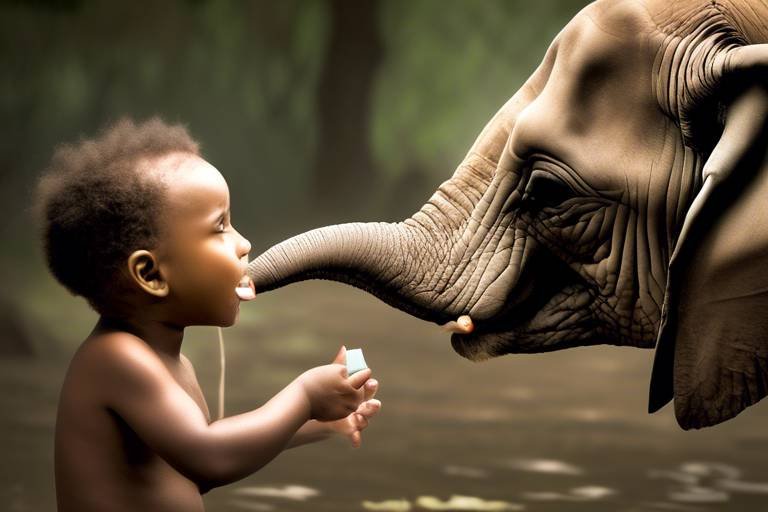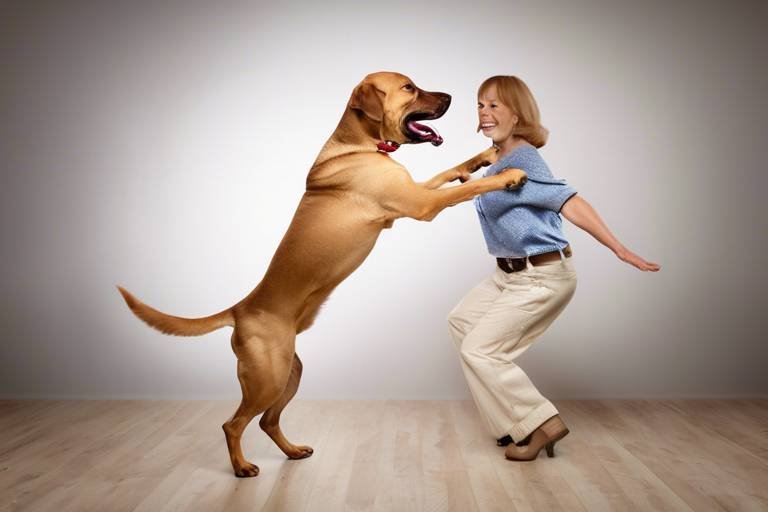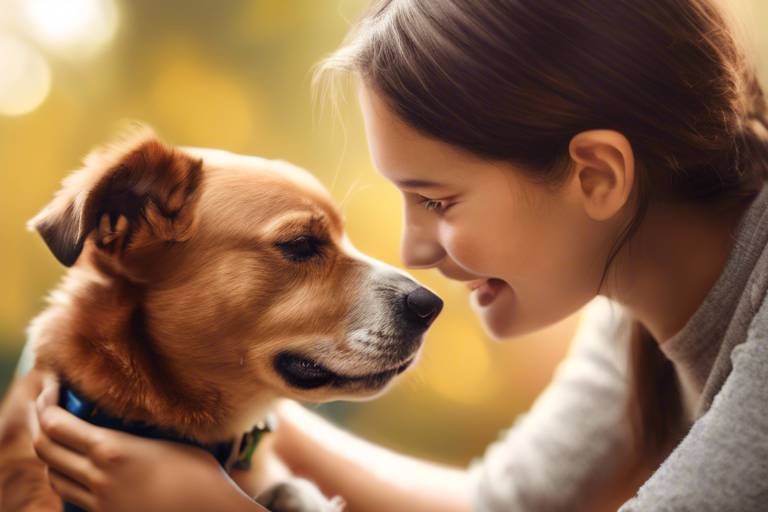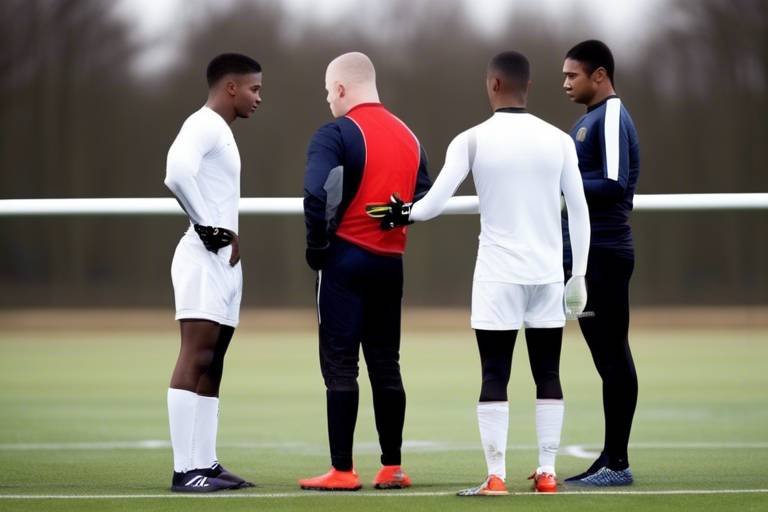Understanding Your Dog’s Reaction to Change
Have you ever noticed how your furry friend seems to react differently when their world gets shaken up? Whether it's a new home, a new family member, or just a change in routine, dogs are creatures of habit, and they thrive on stability. Understanding how dogs respond to change can help you support them through these transitions, ensuring their emotional well-being and happiness. Just like us, dogs can feel stressed, anxious, or even excited when faced with new situations. So, how can you help them navigate these changes? Let’s dive into the fascinating world of canine behavior and explore the ways you can make transitions smoother for your beloved pet.
Dogs are more than just pets; they are family members. Their reactions to changes in their environment or routine can be quite telling. For instance, you might notice your dog becoming more clingy or withdrawn when something shifts in their surroundings. This behavior is often a reflection of their need for reassurance and comfort. Just think of it this way: if you suddenly found yourself in a new city without your usual landmarks, you’d likely feel lost and anxious too! Dogs rely heavily on their surroundings and routines to feel secure, and any disruption can lead to a whirlwind of emotions.
As a pet owner, it’s essential to recognize that changes, even positive ones like a new puppy or a move to a bigger house, can be stressful for your dog. They don’t have the same understanding of these changes as we do; instead, they rely on their instincts and past experiences to navigate new situations. This is why it’s crucial to be proactive in helping them adjust. By understanding their behavior and providing the right support, you can help your dog not only cope with change but thrive in it.
In the sections that follow, we will explore various triggers that can cause stress in dogs, from moving to a new home to introducing new family members. We’ll also discuss how to adapt to changes in routine and recognize signs of stress. With the right approach, you can turn potentially overwhelming situations into opportunities for growth and bonding with your furry companion. So, let’s embark on this journey together and equip ourselves with the knowledge to make life’s transitions a little easier for our four-legged friends!
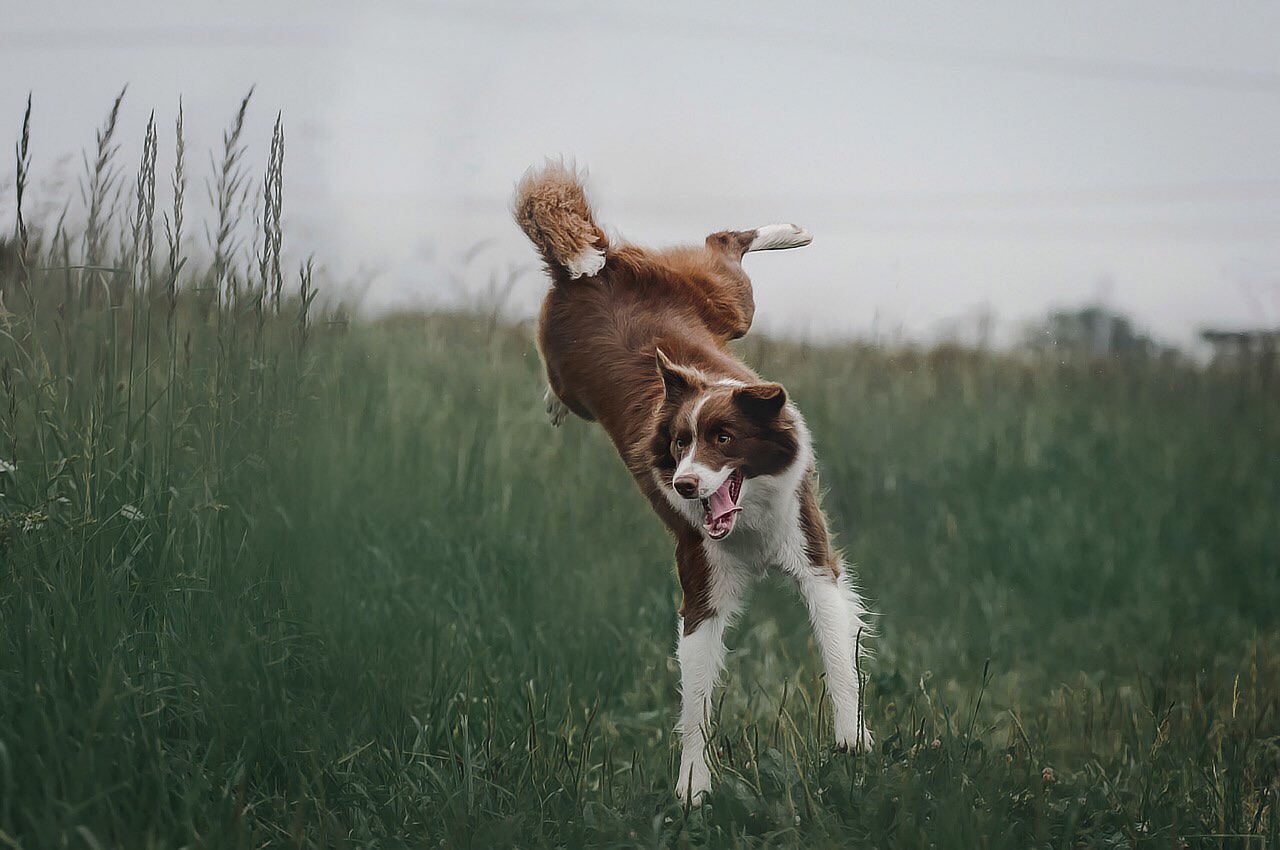
The Importance of Routine
Dogs, much like humans, thrive on a sense of predictability in their daily lives. Imagine waking up every day to the same comforting sounds, the same cozy corners, and the same familiar faces. For our furry friends, routine provides a sense of security and stability. When their day-to-day activities are predictable, dogs feel more relaxed and confident, which can significantly enhance their overall well-being. Think of it as a comforting blanket that wraps around them, shielding them from the uncertainties of life.
When we talk about routine, we’re not just referring to feeding times or walks; it encompasses a variety of activities that make up a dog's day. From the moment they wake up to the time they snuggle back into their beds, dogs appreciate consistency. A well-structured day can help prevent behavioral issues that arise from anxiety and confusion. For instance, if a dog knows that after breakfast comes a walk, followed by playtime, they are more likely to be calm and content.
But what happens when this routine is disrupted? A sudden change—like a new job schedule, a family member moving out, or even a change in the weather—can throw a dog’s world into chaos. They might become anxious, exhibit destructive behaviors, or even withdraw into themselves. Understanding the importance of routine is crucial for dog owners, as it allows us to recognize when our pets are feeling out of sorts and take proactive steps to help them adjust.
To illustrate the impact of routine, let’s consider a few key elements that dogs rely on:
- Feeding Times: Regular meal times help regulate a dog’s metabolism and create a sense of anticipation.
- Exercise and Play: Consistent physical activity not only keeps dogs healthy but also mentally stimulated, reducing boredom-related issues.
- Rest and Downtime: Dogs need time to relax and recharge, and a predictable schedule helps them know when it’s time to unwind.
As responsible pet owners, it’s our job to create a routine that suits our dogs' needs while also being adaptable to life’s inevitable changes. If you anticipate a disruption in your dog’s routine, try to ease them into the change gradually. For example, if you know you’ll be working longer hours, start adjusting their feeding and exercise schedule a few days in advance. This way, they can acclimate to the new routine without feeling overwhelmed.
In summary, routine is not just a series of tasks; it’s a lifeline for dogs. By establishing a consistent schedule and being mindful of changes, we can help our pets navigate the ups and downs of life with greater ease. Remember, a happy dog is often a well-routed dog!
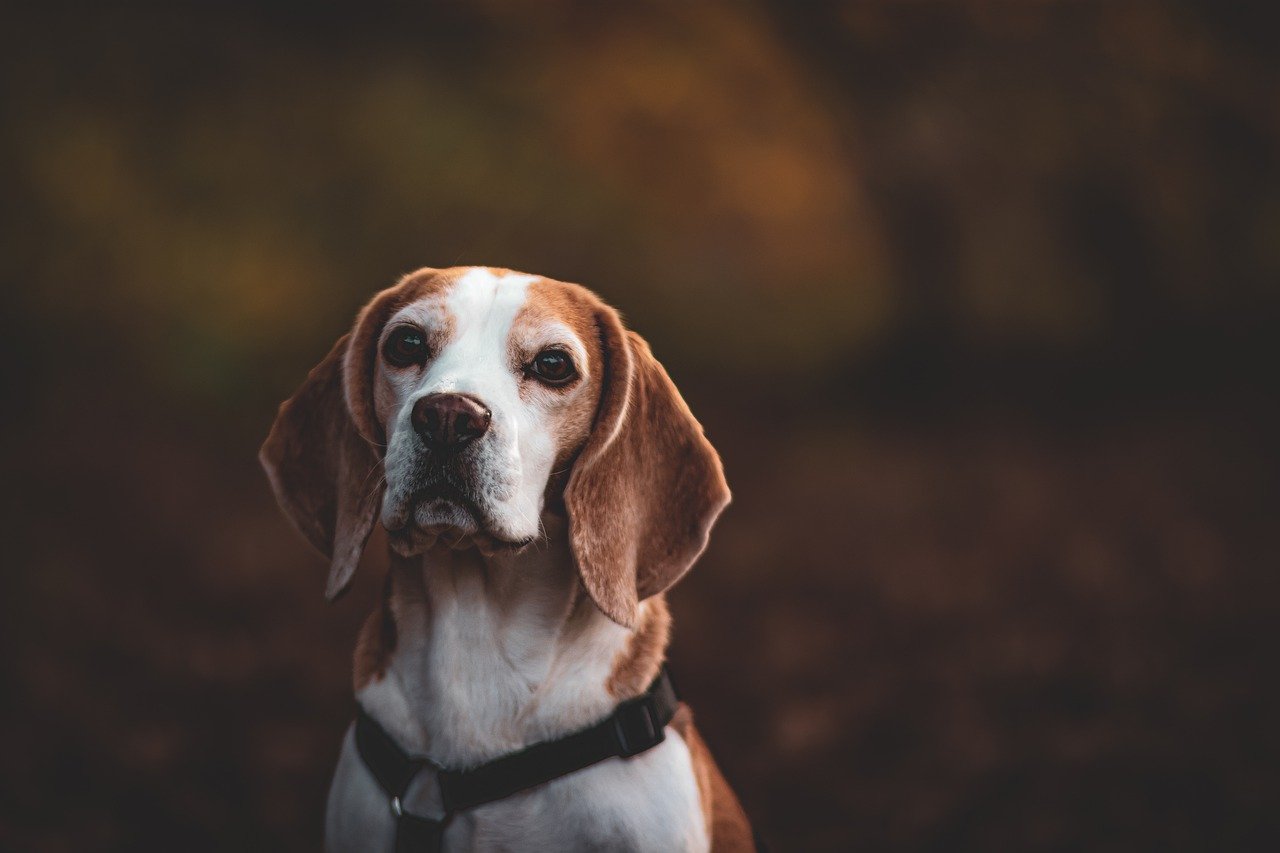
Dogs are incredibly sensitive creatures, and their emotional well-being can be easily affected by changes in their environment or routine. Understanding these triggers is essential for any dog owner who wants to ensure their furry friend remains happy and healthy. Just like us, dogs thrive on predictability and familiarity. When something disrupts their usual way of life, it can lead to stress and anxiety. So, what are some common triggers that can cause your dog to feel uneasy?
One of the most significant changes that can impact your dog's behavior is moving to a new home. Imagine being uprooted from your cozy spot on the couch and transported to a completely unfamiliar place! This can be particularly overwhelming for dogs who rely on their surroundings to feel secure. The new sights, sounds, and smells can be both exciting and frightening, leading to confusion and anxiety.
Another common trigger is the introduction of new family members, whether they are human or animal. Dogs are pack animals, and changes in their social structure can lead to feelings of insecurity. For instance, if you bring home a new puppy or a partner, your dog might feel like their place in the family is threatened. This can manifest in various ways, from aggression to withdrawal, and it’s crucial to manage these introductions carefully to minimize stress.
Additionally, changes in routine can throw your dog off balance. Dogs are creatures of habit, and any deviation from their daily schedule can lead to anxiety. For example, if you suddenly start leaving for work at different times or change their feeding schedule, your dog might become unsettled. It’s essential to recognize that even seemingly minor alterations can have a significant impact on their emotional state.
Here’s a quick overview of some common triggers that can affect your dog's behavior:
- Moving to a new home: The stress of a new environment can be overwhelming.
- Introduction of new family members: Changes in social dynamics can lead to insecurity.
- Changes in routine: Deviations from their daily schedule can cause anxiety.
- Loss of a family member: Grieving can significantly affect a dog's emotional state.
- Traveling: New experiences can be both exciting and stressful.
By being aware of these triggers, you can better prepare for any changes that may come your way. This awareness allows you to implement strategies to help your dog adjust more smoothly, ensuring that their emotional needs are met during times of transition. After all, a happy dog makes for a happy home!
Q: How can I tell if my dog is stressed?
A: Look for signs such as excessive barking, pacing, hiding, or changes in eating habits. If your dog seems unusually clingy or distant, it may be feeling anxious.
Q: What can I do to help my dog adjust to a new home?
A: Create a safe space for your dog with familiar items, maintain a consistent routine, and gradually introduce them to their new environment.
Q: How should I introduce a new pet to my dog?
A: Start by allowing them to sniff each other from a distance. Gradually bring them closer while monitoring their behavior, and always supervise their interactions until you’re confident they can coexist peacefully.
Relocating can be a whirlwind of excitement and stress, not just for you but for your furry friend as well. Imagine being in a place you’ve known all your life, surrounded by familiar smells, sounds, and routines, and suddenly being thrust into a new environment where everything feels foreign. Dogs are creatures of habit, and the disruption of their daily life can lead to anxiety and confusion. To help your dog adapt to this significant change, it's essential to consider a few strategies that can ease the transition and make the move as smooth as possible.
First and foremost, preparation is key. Before the big day arrives, it’s crucial to start acclimating your dog to the idea of moving. This can involve taking them on trips to the new neighborhood, if possible, or simply introducing them to the sounds and smells of the new place. You might even want to consider bringing home items from the new house, like a blanket or a toy, so they can start to associate these new scents with comfort. Remember, dogs are highly sensitive to their environment, and familiar smells can provide a sense of security during a tumultuous time.
Once the moving day arrives, it’s important to keep your dog’s routine as consistent as possible. Try to maintain their feeding and walking schedules, even amidst the chaos of packing and unpacking. If you can, designate a quiet area in your new home where your dog can retreat to when they feel overwhelmed. This space should contain their favorite toys, bed, and perhaps a piece of your clothing to help them feel more at ease.
After the move, setting up a new space for your dog is crucial. It’s not just about unpacking boxes; it’s about creating a comforting environment that feels like home. Here are some tips to help you set up your dog’s new area:
- Choose a quiet corner of the house where your dog can relax.
- Place their bed, toys, and food/water bowls in this space.
- Use familiar items from your old home to provide comfort.
- Gradually introduce them to other areas of the house to prevent overwhelming them.
Lastly, keep a watchful eye on your dog’s behavior during this transition. Signs of stress can manifest in various ways, from excessive barking to decreased appetite. If you notice any concerning changes, consult with your veterinarian for advice on how to best support your pet during this time of adjustment. Remember, patience is essential. With love, understanding, and a little preparation, your dog can thrive in their new home just as they did in the old one.
1. How long does it take for a dog to adjust to a new home?
Most dogs can take anywhere from a few days to a few weeks to adjust to a new environment. This varies depending on the dog's temperament and past experiences.
2. What signs indicate that my dog is stressed after a move?
Common signs of stress in dogs include excessive barking, hiding, loss of appetite, and destructive behavior. If you notice these signs, it’s important to provide comfort and reassurance.
3. Should I introduce my dog to the new neighborhood immediately?
It’s best to introduce your dog to the new neighborhood gradually. Start with short walks to familiarize them with the area, and gradually increase the duration as they become more comfortable.
When it comes to moving, the hustle and bustle can be overwhelming—not just for you but for your furry friend as well. Dogs are creatures of habit, and the sudden upheaval of their environment can lead to anxiety. Therefore, it's crucial to involve your dog in the packing process to help ease their stress. Think of it like this: just as you might feel more at ease when you know what's happening around you, your dog will benefit from being part of the action.
Start by creating a calm atmosphere during the packing phase. While you’re busy sorting through your belongings, set aside a special area or room where your dog can feel safe and secure. This space should contain their favorite toys, blankets, and perhaps even a piece of your clothing to provide comfort. By giving them a designated area, you help them understand that even though things are changing, some aspects of their life remain constant.
Involving your dog in the packing process can be as simple as letting them explore the boxes. Allow them to sniff around and investigate the new items. You might be surprised at how curious they are! This exploration can serve as a distraction from the chaos and help them acclimate to the idea of change. Additionally, consider incorporating some of their favorite activities during breaks. A quick game of fetch or a short walk can work wonders in keeping their spirits high amid the moving frenzy.
Another effective strategy is to maintain your dog's routine as much as possible during this time. Try to stick to their regular feeding and walking schedule. Dogs thrive on routine, and maintaining familiarity in their daily activities can significantly reduce their anxiety. If you know that packing will take a while, you might want to consider having a friend or family member take care of your dog for a day or two, allowing you to focus on the move without feeling guilty about your pet's well-being.
As you prepare to pack, ensure you have a moving essentials bag for your dog. This bag should include everything your pet might need during the transition, such as:
- Food and water bowls
- Leash and collar
- Favorite toys
- Medications (if applicable)
- Comfort items like blankets
Having these essentials readily available will prevent unnecessary stress on moving day. You won’t want to be rummaging through boxes to find your dog’s favorite toy when they need it most! Remember, the goal is to create a seamless transition for your pet, making them feel as comfortable as possible throughout the process.
Lastly, remember that your emotions can affect your dog. If you are feeling stressed or anxious, they might pick up on that energy. So, take a deep breath, stay positive, and reassure your dog with gentle words and affection. After all, you’re both in this together, and with a little planning and care, the moving experience can be a lot less daunting for your four-legged friend.
Q1: How can I tell if my dog is stressed during the move?
A1: Look for signs such as excessive barking, hiding, loss of appetite, or destructive behavior. These can indicate that your dog is feeling anxious about the changes happening around them.
Q2: Should I take my dog with me when I visit the new home before the move?
A2: Yes! Taking your dog to the new home can help them become familiar with the new environment. Just make sure to supervise them and keep them safe during the visit.
Q3: What should I do if my dog refuses to eat during the move?
A3: Stress can affect a dog's appetite. If your dog refuses to eat, try offering their favorite treats or food in a quiet area away from the chaos. If the problem persists, consult your vet.
When you move to a new home, one of the most important things to consider is how to set up your dog’s new space. Just like us, dogs need a sense of security and familiarity to feel comfortable in their surroundings. Imagine being uprooted from your cozy bed and placed in a completely unfamiliar environment; it’s overwhelming, right? That’s exactly how your furry friend feels. To ease their transition, you can take several steps to create a safe haven that feels like home.
First and foremost, choose a designated area for your dog that will serve as their personal space. This could be a corner of a room or a specific area with their bed and toys. Make sure this spot is quiet and away from the hustle and bustle of moving boxes and people. You want it to be a retreat where they can relax and feel safe. It’s like creating a little sanctuary just for them amidst the chaos of your move.
Next, try to bring along familiar items from your old home. Their favorite bed, toys, and even blankets can carry scents that are comforting and reassuring. Think of it as packing a piece of their old life to help them adapt to the new one. You might also want to consider setting up their space in a way that mimics their previous environment. If they had a specific routine, like eating in the same spot or sleeping in a certain area, try to replicate that in your new home.
Another crucial aspect is to establish a consistent routine as soon as you settle in. Dogs thrive on predictability, so maintaining their feeding, walking, and playtimes will help them feel more at ease. You can even incorporate some of their favorite activities into this routine to reinforce positive associations with the new space. For instance, if you used to take them for a walk after dinner, continue that practice in your new neighborhood. It’s all about building a sense of normalcy.
Lastly, don’t forget to spend quality time with your dog in their new space. Sit down with them, play a few games, or simply cuddle. This interaction will not only strengthen your bond but also help them associate the new home with positive experiences. Remember, patience is key during this transition. Just like you, your dog will need time to adjust, so be there for them every step of the way.
By thoughtfully setting up your dog’s new space, you’re providing them with the comfort and security they need to thrive in a new environment. It’s a small step that can make a world of difference in their adjustment process.
- How long does it take for a dog to adjust to a new home? Every dog is different, but typically, it can take anywhere from a few days to several weeks for a dog to fully adjust to a new environment.
- What can I do if my dog is still anxious after the move? If your dog continues to show signs of anxiety, consider consulting with a veterinarian or a professional dog trainer for additional strategies and support.
- Should I keep my dog's routine the same after the move? Yes, maintaining a consistent routine will help your dog feel more secure and reduce anxiety during the transition.
Welcoming new family members into your home can be an exciting time, but it can also be a source of stress for your dog. Imagine being a dog, accustomed to a certain routine and environment, and suddenly, there’s a new person or even another pet vying for your attention and space! This sudden shift can lead to feelings of insecurity and anxiety. It's essential to approach these introductions with care and consideration to ensure a smooth transition for your furry friend.
When introducing a new family member, whether it's a baby, a partner, or another pet, it’s crucial to take things slow. Dogs are creatures of habit, and abrupt changes can throw them off balance. Start by allowing your dog to observe the new person or pet from a distance. This way, they can get accustomed to the new presence without feeling overwhelmed. Gradually bring them closer together, ensuring that your dog feels safe and comfortable at each step.
One effective strategy is to create a positive association with the new family member. For instance, when the new person is around, offer your dog treats or engage them in play. This method helps your dog associate the newcomer with positive experiences, which can significantly reduce their anxiety. Remember, patience is key! It might take time for your dog to adjust, and that’s perfectly normal.
If you’re introducing another pet, consider the following steps to facilitate a smooth introduction:
- Neutral Ground: Introduce the pets in a neutral space where neither feels territorial.
- Controlled Meetings: Use leashes initially to maintain control and prevent any aggressive behavior.
- Supervised Interactions: Allow them to interact under supervision, gradually increasing their time together as they become more comfortable.
Additionally, maintaining your dog’s routine during this transition is vital. Try to keep their feeding, walking, and playtime schedules as consistent as possible. This familiarity can serve as an anchor for your dog amidst the changes. If your dog has a favorite toy or blanket, make sure it’s accessible during this period, as it can provide them with a sense of security.
Lastly, always be observant of your dog’s behavior. Are they showing signs of stress, such as excessive barking, hiding, or changes in eating habits? If so, it’s essential to intervene and provide comfort. Sometimes, a simple cuddle or a reassuring word can go a long way in alleviating their worries. Remember, your dog looks to you for guidance and reassurance, so being calm and confident can help them feel more at ease.
Q: How long does it take for a dog to adjust to a new family member?
A: The adjustment period can vary greatly depending on the dog and the circumstances. It may take days to weeks for your dog to feel comfortable, so be patient and observant.
Q: What should I do if my dog reacts negatively to a new family member?
A: If your dog shows signs of aggression or extreme anxiety, it's important to separate them from the new member and consult a professional trainer or behaviorist for guidance.
Q: Can I use treats to help my dog accept a new family member?
A: Absolutely! Using treats to create positive associations can be very effective. Just make sure to reward your dog when they remain calm and relaxed around the new person or pet.
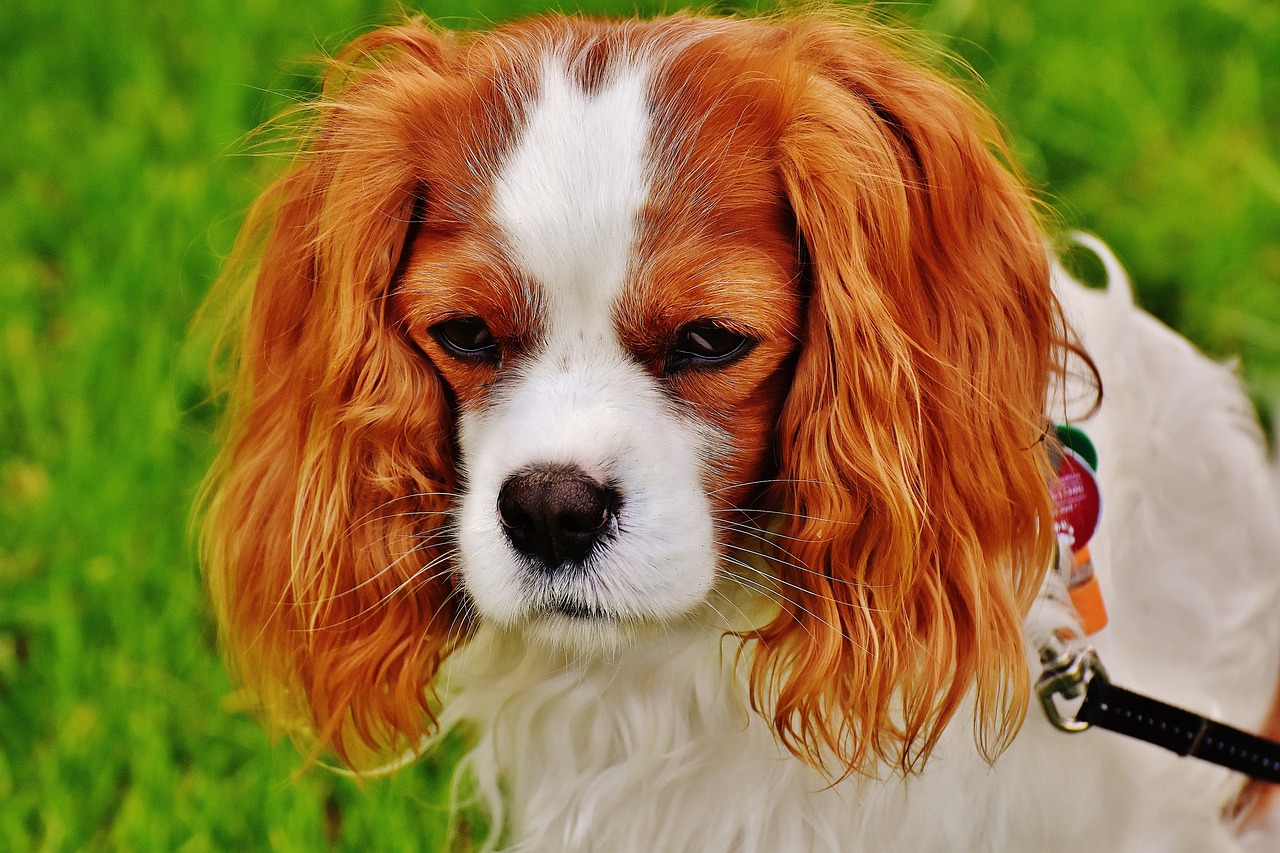
Dogs are creatures of habit, and just like us, they can find it challenging to adapt to changes in their daily routines. Imagine waking up one day and finding that your usual morning coffee ritual has been completely altered. You'd likely feel a bit off, right? This is precisely how your furry friend feels when their routine is disrupted. Whether it's a change in feeding times, walk schedules, or play sessions, these alterations can create uncertainty and anxiety in dogs. Therefore, understanding how to help them adapt is crucial for their emotional well-being.
One effective way to ease your dog's transition is to introduce changes gradually. For instance, if you need to shift their feeding time, consider moving it by just 15 minutes each day until you reach the desired schedule. This slow approach minimizes confusion and allows your dog to adjust without feeling overwhelmed. Think of it as a gentle nudge rather than a sudden push. You wouldn't want someone to throw you into a new job without any training, right? Similarly, your dog deserves a little time to acclimate.
Another strategy is to maintain some consistency within the changes. For example, if you're altering the time you go for walks, try to keep other elements of that routine the same. Use the same route, bring along their favorite toy, or even stick to the same commands. This familiarity can provide a sense of security amidst the changes. It's like finding a familiar face in a crowd; it instantly makes you feel more at ease.
Additionally, reinforcing positive behavior during this transition is essential. Whenever your dog shows adaptability or calmness in response to the changes, reward them with praise or treats. This positive reinforcement not only encourages them to embrace the new routine but also strengthens your bond. Remember, your dog looks to you for cues on how to react to changes, so your calm demeanor can significantly influence their behavior.
Lastly, it's important to recognize that each dog is unique. Some may adapt quickly, while others might take a bit longer. Patience is key. If you notice signs of stress, such as excessive barking, pacing, or withdrawal, take a step back and consider whether the changes might be happening too quickly. Adjust your approach and give your dog the time they need to feel comfortable.
- How long does it typically take for a dog to adapt to a new routine?
Every dog is different, but generally, it can take anywhere from a few days to several weeks. Monitor their behavior and adjust your approach as needed. - What are some signs that my dog is stressed about changes?
Common signs include excessive barking, destructive behavior, pacing, and changes in eating or sleeping patterns. - Can I use training techniques to help my dog adjust?
Absolutely! Positive reinforcement and consistent training can help your dog feel more secure and adapt to new routines.
When your dog is faced with changes, reinforcing positive behavior becomes essential. Just like humans, dogs thrive on encouragement and support, especially during stressful times. Imagine being in a new place, surrounded by unfamiliar faces and sounds; it can be overwhelming! That’s why it's crucial to create an environment where your furry friend feels safe and appreciated. Positive reinforcement is not just about treats; it’s about building a bond of trust and understanding.
One effective way to reinforce good behavior is through the use of **consistent rewards**. When your dog responds well to a new routine or interacts positively with a new family member, make sure to acknowledge that behavior immediately. This could be in the form of a tasty treat, a favorite toy, or even a simple pat on the head. The key is to make the reward meaningful to your dog. For instance, if your pup loves a particular toy, use it as a reward when they display calm behavior in a new situation.
Additionally, consider incorporating **training sessions** into your daily routine. Training not only helps in reinforcing good behavior but also serves as a distraction from the changes happening around them. Short, fun sessions can be a great way to engage your dog’s mind and help them focus on something positive. Use commands they already know, and reward them for following through. This builds their confidence and reinforces the idea that they can adapt to change successfully.
Another important aspect of positive reinforcement is **patience**. Just like us, dogs need time to adjust to new circumstances. If your dog is acting out or seems anxious, avoid scolding them. Instead, redirect their attention to a positive behavior and reward that. For example, if your dog is barking at a new neighbor, encourage them to sit or lay down instead. When they comply, shower them with praise and treats. This helps them learn what behaviors are acceptable in their new environment.
To help you understand the importance of reinforcing positive behavior, here’s a quick overview:
| Positive Reinforcement Techniques | Benefits |
|---|---|
| Consistent Rewards | Builds trust and encourages desired behavior |
| Training Sessions | Provides mental stimulation and strengthens bonds |
| Redirecting Attention | Helps in managing anxiety and discouraging negative behavior |
In summary, reinforcing positive behavior is not just a technique; it’s a way to nurture your relationship with your dog during times of change. By being observant, patient, and proactive, you can help your dog navigate through transitions smoothly. Remember, every small step towards positive behavior deserves recognition, and with your support, your furry friend will learn to embrace change with confidence!
- What is positive reinforcement? Positive reinforcement is a training method that involves rewarding desired behaviors to encourage their repetition.
- How can I tell if my dog is stressed? Look for signs such as excessive barking, hiding, or changes in eating habits. These can indicate that your dog is feeling anxious.
- How long does it take for a dog to adjust to change? Every dog is different, but it can take anywhere from a few days to several weeks for a dog to adjust to significant changes.
- Can I use treats for positive reinforcement? Yes, treats are a great way to reinforce good behavior, but make sure to choose healthy options and vary them to keep your dog interested.
Understanding your dog's emotional state is crucial for fostering a healthy and happy environment. Just like us, dogs experience stress, and they often communicate their feelings through body language and behavior. Recognizing these signs early can help you intervene and provide the support your furry friend needs. So, how can you tell if your dog is feeling stressed?
First, it's essential to observe their body language. A stressed dog may exhibit a range of physical signs, including:
- Tucked Tail: A tail that is tucked between the legs can indicate fear or anxiety.
- Averted Gaze: If your dog is avoiding eye contact, it may be feeling uncomfortable or threatened.
- Excessive Barking: While barking is normal, excessive barking can signal distress or frustration.
- Licking Lips or Yawning: These behaviors can be signs of nervousness, especially if they occur frequently.
- Shaking or Trembling: If your dog is shaking, it could be a physical manifestation of stress or fear.
In addition to physical signs, you should also pay attention to changes in behavior. For instance, if your dog suddenly becomes more withdrawn or stops engaging in activities they once enjoyed, it could be a sign that something is bothering them. Similarly, if they begin to exhibit destructive behaviors, such as chewing furniture or digging, this can indicate that they are struggling to cope with stress.
Moreover, changes in appetite can also be a red flag. A dog that suddenly refuses to eat or shows a marked decrease in interest in food may be experiencing anxiety. Conversely, some dogs may respond to stress by overeating, which can lead to other health issues.
It's also worth noting that certain breeds may be more prone to stress than others. For example, breeds that are naturally more anxious, like Border Collies or Greyhounds, may require additional attention and care during stressful situations. Understanding your dog's breed characteristics can help you tailor your approach to managing their stress.
To assist in recognizing stress, you can keep a journal of your dog's behavior, noting any changes or patterns that arise during new experiences or transitions. This record can be invaluable for identifying triggers and understanding how your dog reacts to various situations.
In summary, being attuned to your dog's body language and behavioral changes is essential for recognizing signs of stress. By paying attention to these signals, you can take proactive steps to alleviate their anxiety and create a more comfortable environment for them. Remember, a happy dog is a healthy dog!
Q: What are some common signs of stress in dogs?
A: Common signs include a tucked tail, excessive barking, averted gaze, licking lips, and changes in appetite.
Q: How can I help my dog cope with stress?
A: Providing a consistent routine, engaging in positive reinforcement, and creating a safe space can help your dog feel more secure.
Q: Are certain breeds more prone to stress?
A: Yes, some breeds, like Border Collies and Greyhounds, may be more sensitive to stress and require extra care.
Q: When should I seek professional help for my dog's stress?
A: If your dog's stress symptoms persist or worsen, it's advisable to consult a veterinarian or a professional dog trainer for guidance.
Frequently Asked Questions
-
How can I tell if my dog is stressed by changes in the environment?
Dogs can’t exactly tell us when they’re feeling anxious, but they do have their own ways of communicating! Look for signs like excessive barking, hiding, or changes in eating habits. If your dog is pacing or seems more clingy than usual, these could be indicators that they’re feeling uneasy. Just like us, dogs can feel overwhelmed, so paying attention to these cues is crucial.
-
What can I do to help my dog adjust to a new home?
Moving can be a big deal for our furry friends! To ease the transition, try to create a familiar environment by using their favorite toys and bedding. Take your time setting up their space and allow them to explore at their own pace. Also, maintaining a consistent routine as much as possible can help your dog feel secure in their new surroundings.
-
How important is routine for my dog?
Routine is like a comforting blanket for dogs. It gives them a sense of security and predictability in their daily lives. When routines change, it can lead to confusion and stress. Try to keep feeding times, walks, and play sessions consistent, even during transitions. This familiarity can help your dog feel more at ease and less anxious.
-
What are some common triggers that can stress my dog?
There are several common triggers that can unsettle our canine companions. These include moving to a new home, introducing new family members (be it people or pets), changes in daily routines, or even loud noises like fireworks. Being aware of these triggers can help you prepare and support your dog through tough times.
-
How can I reinforce positive behavior during transitions?
Positive reinforcement is key! Whenever your dog displays calm behavior, reward them with treats or praise. This creates a positive association with the new situation. You can also engage in fun activities or training sessions to redirect their energy and keep their minds stimulated. Remember, a happy dog is a well-adjusted dog!
-
What should I do if my dog shows signs of anxiety?
If your dog is showing signs of anxiety, it's important to take action. Start by creating a safe space where they can retreat when feeling overwhelmed. You might also consider calming products like anxiety wraps or pheromone diffusers. If the anxiety persists, consulting with a veterinarian or a professional dog trainer can provide additional strategies tailored to your dog's needs.










